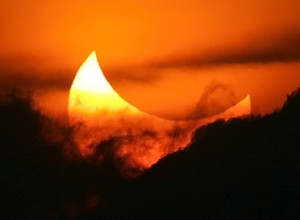
Heavenly bodies has always been the subject of interest and study even before the advent of modern astronomy. People in ancient times observe the occurrence of an ominous phenomenon believed to be a sign of death or pestilence.
Eclipses were feared by people in those times. But today, they are among the most viewed phenomenon along with comets and meteor showers.
What is the difference between a solar eclipse and a lunar eclipse? Solar eclipse happens when the Moon passes between the Earth and the Sun and may fully or partially blocks the light from the Sun. Lunar eclipse occurs when the Sun, Moon and Earth are aligned exactly. With the Earth in the middle, it blocks the Sun’s light from striking the Moon.
Interesting Facts about Eclipses
- The first known record believed to be a solar eclipse was on March 5, 1223 B.C. written in a Syrian clay tablet. Some argue that the earliest account is on November 30, 3340 BC this time from a stone in Ireland. Other historical records points back yet another record of solar eclipse in China way back 4000 years ago. These claims, however, are highly disputed even today. The only historical source considered to have successfully identified the occurrence of a solar eclipse came from an Assyrian text, and that was on June 15, 763 BC.
- The partial solar eclipse of June 1, 2011 is the most recent solar eclipse that occurred in the polar region. Utsjoki Finland, and Finnmark, Norway saw the eclipse around midnight. It’s a special kind of eclipse since half of the moon’s shadow (penumbra) was cast in daytime and the other during nighttime. The center of moon’s shadow (umbra) missed the earth, so there was no total solar eclipse during the entire duration of the eclipse.
- July 11, 2010 was the last time we had a total solar eclipse. Unfortunately, only a few had a chance to see the total solar eclipse because it occurred in the southern Pacific Ocean. What’s really interesting about it is that it occurred in an island where the mysterious statues (Ahu Tongariki) were found.
- Total solar eclipses happen every one and a half year but we can experience as much as 5 solar eclipses. However, most of them occur in isolated areas like the Pacific Ocean. We will experience the next total solar eclipse somewhere around November 13, 2012.
- The most spectacular eclipse seen so far was a lunar eclipse that lasted for about 3 hours and 40 minutes. It happened on June 15, 2011 in many parts of the world and was considered the longest and most spectacular eclipse in the past 11 years. Australia, Singapore, and India were the first to view this beautiful but rare phenomenon. The moon turned into orange or reddish hue after the earth casts its shadow on a full moon. This hue was due to the sun’s rays passing through the atmosphere which tends to scatter light with the longest wavelength – orange to red.
Eclipses has nothing to do with anything bad that’s been happening. Contrary to popular belief, eclipses does not affect the earth’s tides. It does not pose any risk to the environment and health except of course in the case of a solar eclipse when one views it with the naked eye.
Just recently, the “supermoon” phenomenon occurred bringing the moon closest to the earth in distance. This once in a year occurence allowed us to see the Moon 14% bigger and 30% brighter than ordinary nights.
Recommended Articles:

